Have you ever wondered how animals are weighed? In this article you will learn what tricks veterinarians resort to during the process of weighing different animals. 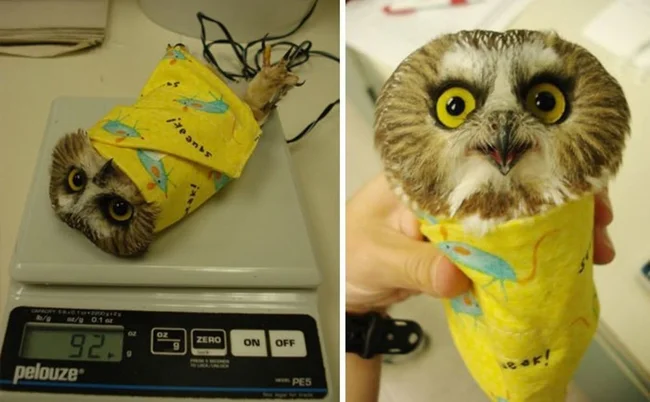
Insects and all sorts of small things, for example, are weighed on very precise electronic/jewelry scales or even in kitchen electric measuring spoons. 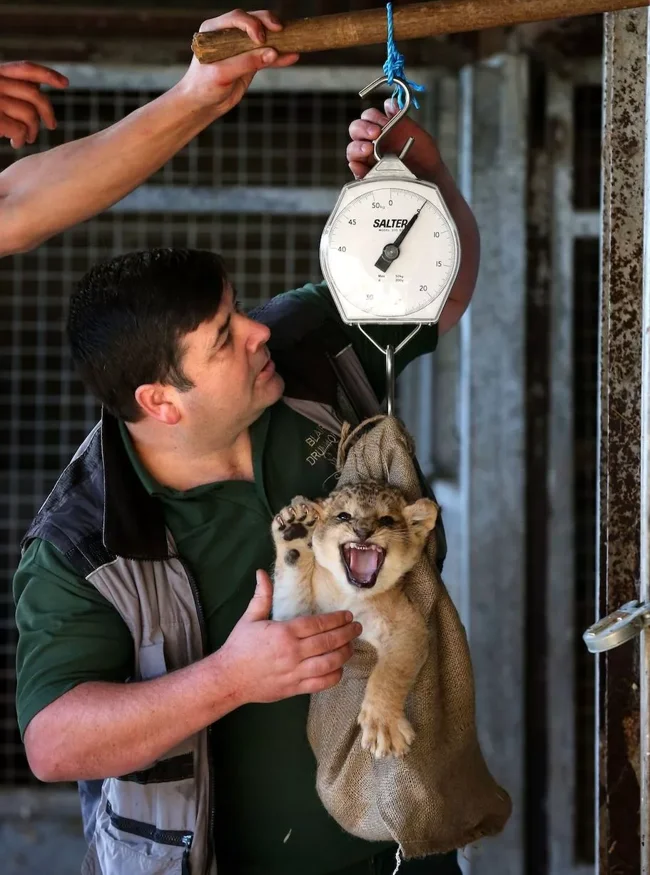
And in order not to worry about tiny larvae and measure them one by one, scientists came up with the idea of scanning them. The larvae are laid out on black paper, covered with glass and run over them with a hand-held scanner. Next, the image is processed and loaded into special programs, where algorithms calculate the projection area for each larva and calculate their weight. 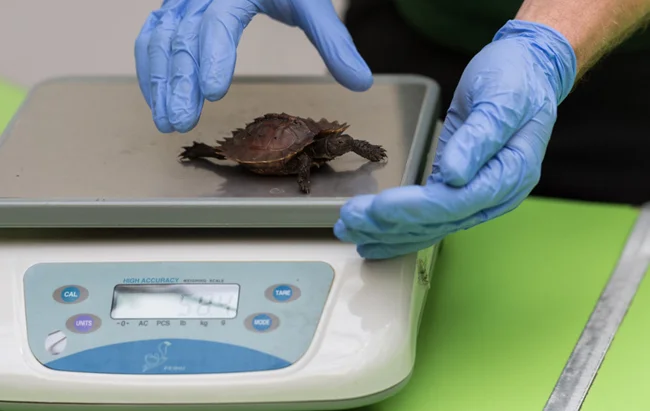
You can’t scan an animal slightly larger than a cockroach - you have to get tricky with all sorts of bells and whistles and weights. During the weigh-in, those who make contact are bribed with treats and tricked into getting onto the scales. The violently biting brethren in the face of hedgehogs, mice, grass snakes and others are placed in buckets, glasses and cups. The main thing is that the animal does not harm itself or others. 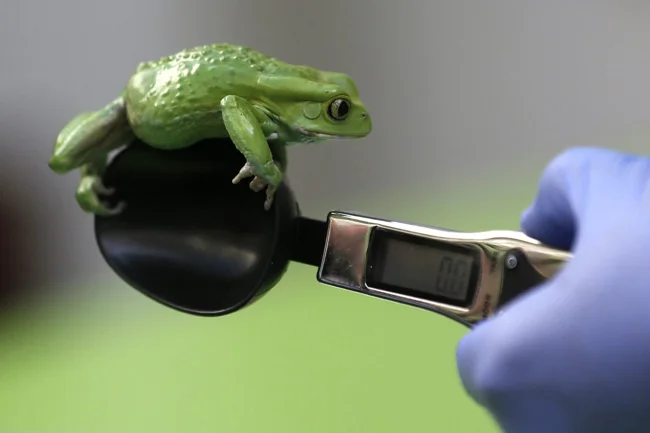
Wild birds are swaddled during procedures. The wings are tightly wrapped to the body, and everything else will not fly away. They will make shawarma from the bird - and put it on the scales. The main thing is not to confuse anything! They don’t bother with small birds at all. They are unceremoniously thrust upside down into narrow oblong containers. So the wings fit tightly to the body, and the bird, no matter how much it flinches, will not go anywhere! 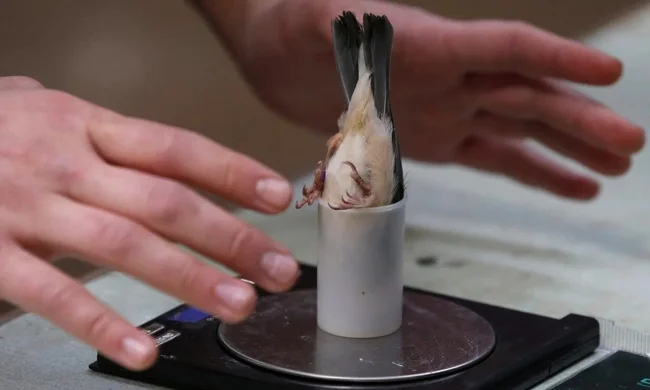
With larger friends, the trick with a glass is unlikely to work. Those with whom it is possible to come to an agreement are bribed with the same tasty treat and sent to the scales voluntarily. And the most restless ones are weighed in their hands. The arithmetic is simple: first they find out the weight of a person and an animal, then the weight of the person himself. The difference between these indicators will be the desired figure. This, by the way, is also done with the cubs of large animals: it is easier to raise them once than to calm them down a thousand times and try to force them onto the scales. 
However, no one risks holding predatory animals. There are three options for them. The first is a scale at the entrance/exit of the cage, where the animal is trained to stand for a treat. The second is a special “size grid” on the walls of the enclosure. Once you know your height, you can try to calculate your weight. The method is quite inaccurate, but in the absence of fish, the height meter is scales. The third is a change in weight during veterinary examinations, when the animal is given sleeping pills. 
During operations under anesthesia, veterinarians try to collect as much data as possible about the animal. This is the only time a predator can be safely measured.
Large animals are weighed on huge scales. Special equipment can withstand up to 5 tons - enough even for an elephant! The main thing with this measurement is that all 4 legs of the animal are on the platform. If mega scales are not available, you can get by by calculating the weight using a size chart. To do this, measure the length of the torso and the girth of the chest with a centimeter tape, and then look for the necessary numbers in the tables - everything has long been calculated using formulas. The error of such a measurement is approximately 20-30 kilograms, and if the measuring hands do not grow from there, then all of 50. 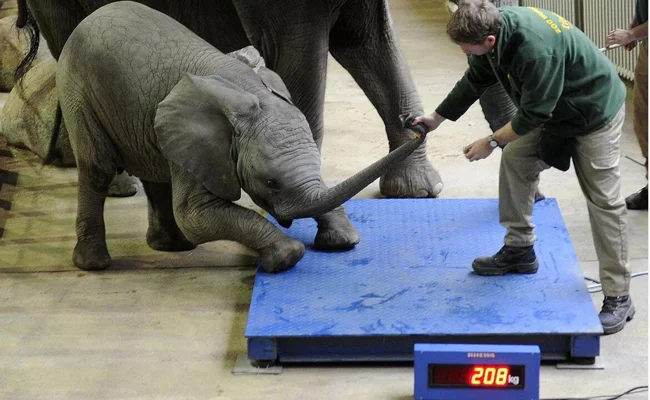
Well, what about cetaceans? You can’t run after them with a ruler and you can’t put them on the scales! There are some tricks here too. The weight of animals kept in captivity can be measured by changes in the water level in the pool where the animal is released. Or, for example, during transportation, when waterfowl are loaded into special tank trucks. Put such a car on the scale, first with the whale, and then without. 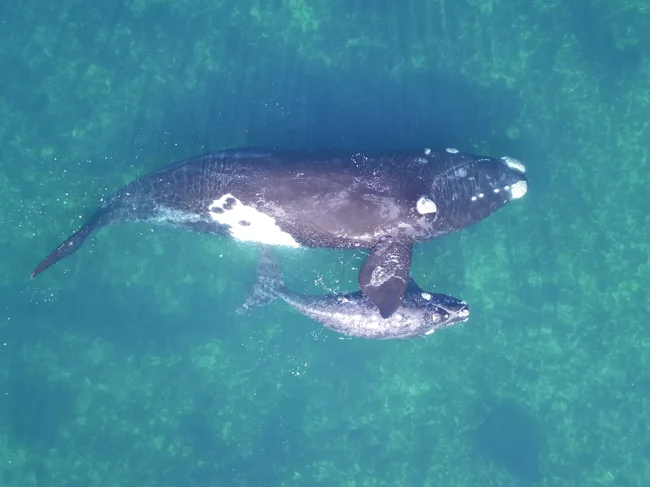
Wild giants are much more difficult to weigh. In addition, this is not entirely safe: under the pressure of their own weight on land, whales die very quickly. Therefore, until recently, all manipulations with weighing were carried out only on those animals that washed ashore. They were measured using a spring scale on a winch or on a dimensional truck scale.
However, scientists have recently found a new way to find out the mass of a whale. This is done using drones! Drones are launched over the ocean and photograph animals from all angles. Next, people sort and collect photographs of each whale, build a 3D model from them, calculate its volume, and then its mass. This method turned out to be very effective, because it allows you to monitor not only the weight of whales in dynamics, but also their movements.
0 comments
